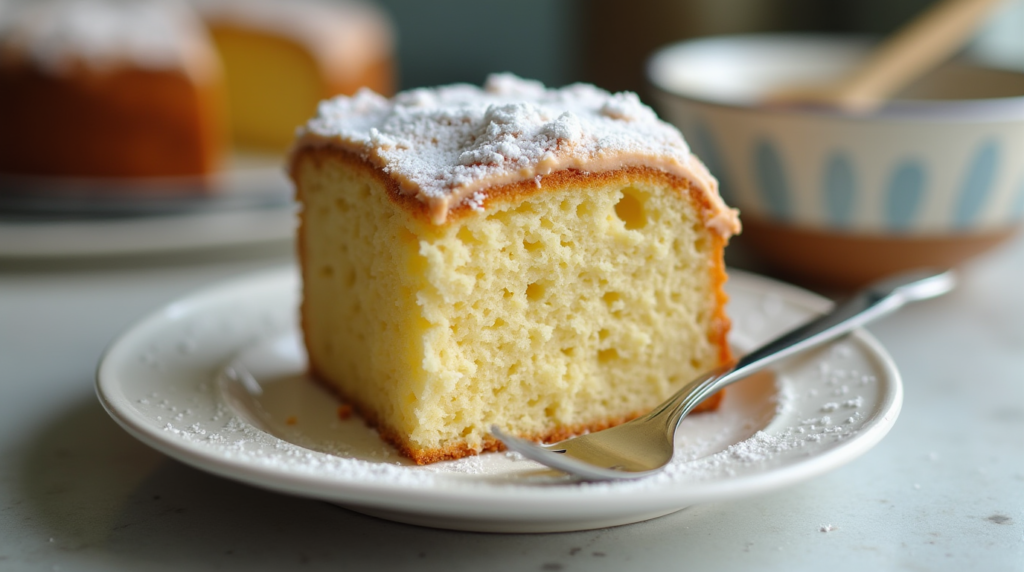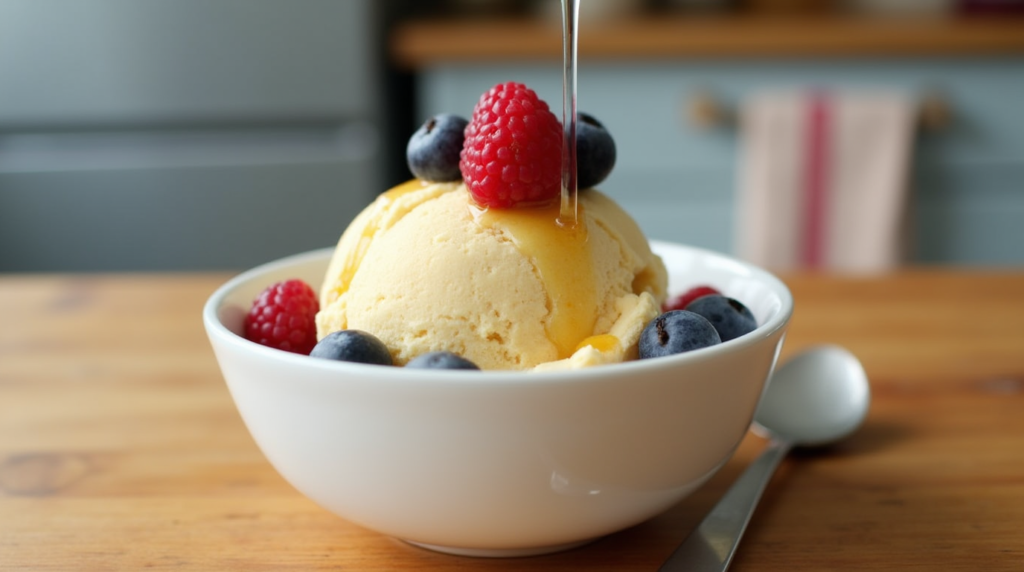Desserts finish our meals with sweet finales, offering a delightful conclusion to any dining experience. But what exactly makes a dessert? By understanding the definition, characteristics, and various types of desserts, you can better appreciate these sweet treats. In this guide, we explore what desserts are, their history, and how they differ from other sweet snacks. Whether you love cooking or are just curious about desserts, this article provides valuable insights into what makes a dish a dessert. For more on holiday sweets, check out what Americans eat for dessert at Christmas to see how festive desserts differ across cultures.
Introduction to Desserts
What is a Dessert?
A dessert serves as the sweet course at the end of a meal. It includes a wide range of treats, from simple fruits to elaborate pastries and candies. The main purpose of dessert is to provide a satisfying conclusion to a meal, offering a moment of enjoyment and pleasure. Additionally, desserts vary greatly across different cultures, reflecting local ingredients and cooking traditions.
The History of Desserts
Evolution Over Centuries
Desserts have evolved over centuries, shaped by cultural exchanges and advances in food preparation. In ancient times, people enjoyed simple desserts like fruits, nuts, and honey. As civilizations grew, they introduced sugar and refined ingredients, creating more complex and luxurious desserts. For example, European cuisines developed a rich variety of pastries, custards, and candies that laid the foundation for modern desserts. Today, desserts continue to evolve by blending traditional techniques with new flavors and presentations.
Key Characteristics of Desserts
Sweetness: The Defining Trait
Sweetness stands as the most important feature of desserts. They use ingredients like sugar, honey, and syrups to create delightful flavors. This sweetness sets desserts apart from other courses and snacks, making them a unique and cherished part of the meal.
Texture and Temperature
Desserts also vary in texture and temperature, which adds to their appeal. Some are creamy and smooth, like panna cotta and mousse, while others are crunchy and flaky, such as pastries and cookies. Additionally, desserts can be served hot or cold, offering different sensory experiences. The combination of texture and temperature plays a significant role in what makes a dish a dessert, enhancing its overall enjoyment.
Types of Desserts
Baked Desserts: Cakes, Cookies, and More
Baked desserts are among the most popular types. This category includes cakes, cookies, pies, and tarts, all made using baking techniques. Baked desserts are versatile and can incorporate a variety of flavors and ingredients. For instance, from rich chocolate cakes to delicate fruit tarts, these desserts cater to a wide range of tastes and preferences.

Frozen Desserts: Ice Cream and Sorbet
Frozen desserts offer a refreshing alternative to baked treats. Ice cream, gelato, sorbet, and frozen yogurt fall under this category. These desserts are loved for their creamy textures and endless flavor possibilities. Especially during warmer months, frozen desserts provide a delightful way to cool down and satisfy sweet cravings.

Popular Dessert Categories
Pastries and Tarts
Pastries and tarts are beloved for their flaky textures and rich flavors. This category includes sweet baked goods like croissants, éclairs, and fruit-filled tarts. Pastries often feature layers of dough and butter, creating a delicate and buttery taste. Meanwhile, tarts are known for their crisp crusts and luscious fillings. These desserts are staples in many cultures, offering both simplicity and elegance.
Confections: Candy and Fudge
Confections include a wide range of sweet treats, such as candy, fudge, and other sugar-based delights. These desserts are typically bite-sized and designed for immediate enjoyment. From hard candies and gummies to soft fudge and truffles, confections offer a quick and satisfying way to indulge in sweetness. They often serve as toppings or ingredients in other desserts, enhancing flavor and texture.
Custards and Puddings
Custards and puddings are creamy desserts made from a mixture of milk or cream, sugar, and eggs or starches. Examples include crème brûlée, flan, and bread pudding. These desserts are prized for their rich and velvety textures, often flavored with vanilla, chocolate, or fruits. Custards and puddings provide a comforting and luxurious end to any meal.

Essential Dessert Ingredients
Common Sweeteners: Sugar and Honey
Sweeteners are fundamental to desserts, providing the primary source of sweetness. Sugar is the most commonly used sweetener, available in various forms like granulated, brown, and powdered sugar. Additionally, honey, maple syrup, and agave nectar serve as natural alternatives that add distinct flavors and extra health benefits. The choice of sweetener significantly influences the taste and texture of the dessert.
Dairy-Based Ingredients: Cream and Milk
Dairy ingredients play a crucial role in many desserts, contributing to their creamy textures and rich flavors. Cream, milk, butter, and cheese are staples in various sweet treats, from ice cream and custards to cakes and pastries. These ingredients add body and depth, enhancing the overall mouthfeel and taste of the dessert.
Desserts Around the World
European Desserts: Tiramisu and Éclairs
European desserts are known for their sophistication and variety. But what classifies a dessert? Tiramisu from Italy, with its layers of coffee-soaked ladyfingers and mascarpone cream, and éclairs from France, filled with rich custards and topped with chocolate glaze, are prime examples of famous European desserts. These treats highlight the continent’s dedication to quality ingredients and careful preparation techniques, showcasing what truly classifies a dessert as an irresistible sweet indulgence.
Asian Desserts: Mochi and Gulab Jamun
Asian desserts offer unique flavors and textures, often incorporating ingredients like rice, coconut, and tropical fruits. Mochi from Japan, a chewy rice cake filled with sweet fillings, and Gulab Jamun from India, sweet milk-based dumplings soaked in syrup, are beloved worldwide. These desserts showcase the diversity and creativity of Asian cooking traditions, providing delightful alternatives to Western sweets.
The Art of Dessert Presentation
Importance of Appearance
The visual appeal of desserts plays a significant role in their enjoyment. An attractive presentation enhances the overall experience, making the dessert more enticing. Vibrant colors, intricate designs, and elegant plating techniques are common in fine dining settings, where the presentation of desserts is as important as their taste.
Common Garnishes: Whipped Cream and Fresh Fruit
Garnishes enhance both the appearance and flavor of desserts. Whipped cream, fresh fruit, chocolate shavings, and sprinkles are popular choices that add texture and visual interest. These embellishments transform a simple dessert into a stunning masterpiece, elevating its appeal and making it more memorable.
Serving Desserts
Post-Meal Treats
Traditionally, desserts follow the main course, providing a sweet conclusion to the meal. This timing allows diners to enjoy a satisfying end without feeling overly full, as desserts are typically lighter than main dishes. Moreover, serving dessert after the meal aids digestion, as sweetness helps break down the flavors of the previous courses.
Special Occasions: Birthdays and Weddings
Desserts hold a special place in celebrations and special occasions. Birthday cakes, wedding pastries, and festive sweets are integral to these events, symbolizing joy and festivity. These desserts often feature elaborate decorations and tailored themes, making them central to the event’s success and memorability.
The Nutritional Profile of Desserts
Caloric Content
Desserts generally contain high calories due to their rich ingredients and high sugar content. While they provide quick energy, it’s important to consume them in moderation to avoid excessive calorie intake. Understanding the caloric content of different desserts helps you make informed dietary choices and maintain a balanced diet.
Balancing Desserts in a Healthy Diet
Incorporating desserts into a healthy diet involves mindful consumption and portion control. Opt for smaller servings, choose desserts with nutrient-rich ingredients, and balance them with regular physical activity. This approach allows you to enjoy sweet treats without compromising your health goals. Therefore, moderation is key to maintaining a healthy relationship with desserts.
Desserts vs. Snacks
Sweet vs. Savory Snacks
Desserts are primarily sweet, whereas snacks can be either sweet or savory. This distinction influences when and how they are consumed. Desserts typically follow a meal, while snacks are enjoyed between meals or as quick bites throughout the day. Understanding this difference helps in categorizing and enjoying these treats appropriately.
Candy: Dessert or Snack?
Differences Between Candy and Traditional Desserts
Candy and traditional desserts share similarities in their sweetness but differ in their preparation, ingredients, and consumption methods. Candies often focus solely on sugar and flavorings, while desserts incorporate a wider range of ingredients and textures. This distinction affects how they are enjoyed and integrated into meals.
Overlap of Candy in Dessert Menus
Despite their differences, candy frequently appears on dessert menus as toppings, ingredients, or standalone treats. Candies like chocolate chips, caramel pieces, and gummy bears enhance the flavor and texture of various desserts, blurring the line between candy and traditional sweet courses. This integration showcases the versatility of candy in enhancing the dessert experience.
Healthier Dessert Alternatives
Sugar-Free and Low-Calorie Desserts
As health consciousness rises, many traditional desserts reinvent themselves to meet modern dietary needs. Sugar-free and low-calorie versions of favorites like tiramisu, crème brûlée, and brownies allow for indulgence without excessive sugar and calories. These healthier options use natural sweeteners, reduced sugar amounts, and alternative ingredients to maintain flavor while enhancing nutritional value.
Fruit-Based Desserts
Fruit-based desserts offer natural sweetness and extra nutrients, making them a healthier alternative to traditional sweets. Desserts like fruit tarts, sorbets, and fresh fruit salads pack vitamins, fiber, and antioxidants. Incorporating fruits into desserts reduces the reliance on added sugars and provides a refreshing and satisfying option that aligns with a balanced diet.
The Future of Desserts
Traditional vs. Modern Desserts
The world of desserts continuously evolves by blending traditional recipes with modern cooking innovations. Traditional desserts maintain their classic flavors and methods, preserving cultural heritage and time-tested tastes. On the other hand, modern desserts experiment with new ingredients, techniques, and presentations, offering fresh and exciting experiences. This evolution ensures that desserts remain relevant and appealing to contemporary palates while honoring their origins.
Influence of Food Trends
Food trends significantly impact the evolution of desserts, introducing new flavors, ingredients, and concepts. Trends like veganism, gluten-free baking, and the use of superfoods have led to innovative desserts that cater to diverse dietary preferences and health-conscious consumers. These trends push the boundaries of traditional dessert-making, resulting in unique and globally inspired sweet treats.
Frequently Asked Questions
What Is the Simplest Form of Dessert?
The simplest form of dessert is fresh fruit, which provides natural sweetness and essential nutrients without the need for elaborate preparation.
Can a Savory Dish Be Considered a Dessert?
Typically, savory dishes are not considered desserts due to their flavor profiles. However, some innovative culinary creations blend sweet and savory elements, creating unique dessert experiences.
Conclusion
Understanding what classifies a dessert involves recognizing the defining characteristics of sweetness, texture, and presentation. Desserts include a wide range of sweet treats, from baked goods and frozen delights to custards and confections. Additionally, the classification of desserts considers their preparation methods, ingredients, and cultural significance.
Desserts are a delightful part of our culinary landscape, offering moments of enjoyment and joy. By understanding the various aspects of desserts, including their types, nutritional profiles, and cultural roles, you can make informed choices that enhance your dining experience. Whether you prefer traditional pastries, innovative confections, or healthy sweet treats, there’s a dessert to suit every taste and occasion. Embrace the diversity of desserts and savor the sweet moments they bring to your life.

